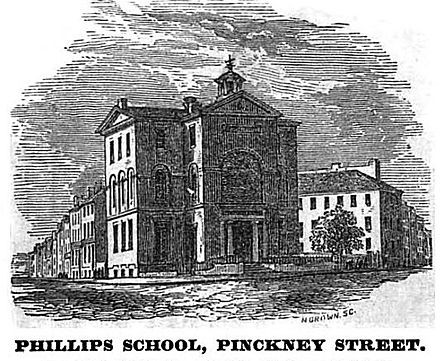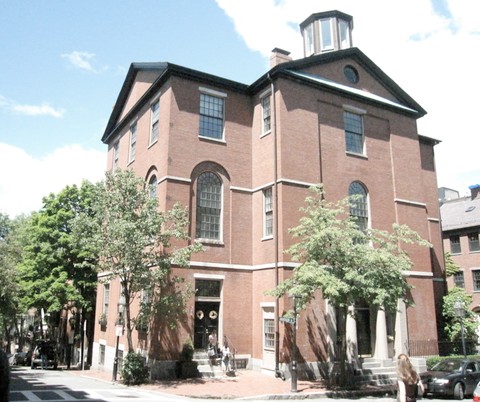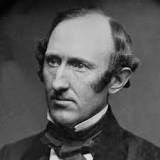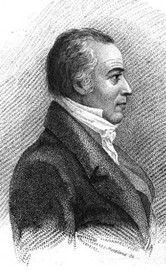Wendell Phillips School
Introduction
Text-to-speech Audio
Images
Drawing of the Phillips School

The Phillips School today

Wendell Phillips

John Phillips

Backstory and Context
Text-to-speech Audio
The Phillips school was named after John P. Phillips, the first mayor of Boston and father to Wendell Phillips. Both men were highly regarded within the Boston community for their activism. Wendell Phillips was a member of Boston’s wealthy upper class, but came to sympathize greatly with abolitionists after being present for the attempted lynching of William Lloyd Garrison. This was against the norm of the time, as many of Boston’s upper class men had protested against abolitionists in 1835 due to fears surrounding business relations with the south. He ended his law practice in 1836 to dedicate himself to the abolitionist movement. He “was not willing to act under an oath to the Constitution of the United States”, as he did not agree with the Constitution’s toleration of slavery. Soon after, Phillips joined the American Anti-Slavery Society, a group founded by William Lloyd Garrison, Frederick Douglass, and Arthur Tappan. He also took measures to avoid products made by slave labor. The school stands as a representation of his efforts for equality.
After opening in 1825 as the English High School, the school was renamed in 1844 as the Phillips Grammar School. The Phillips Grammar School, in its beginning years, served wealthy, white boys and was “considered one of the best in the city”, which was in direct contrast to the Abiel Smith School, the main public school for African American and Black children throughout the city of Boston, in the way that it was noticeably inferior to all white schools. Black Bostonians had been fighting unwaveringly for equal education within the city throughout the majority of the 19th century. The disparity exhibited between the two schools illuminated the disservices and inequality facing Black youth. Without the ability to access the resources or opportunities the white children had, Black students were setback in educational possibilities and greatness.
The Phillips School played a part in the Roberts Vs. City of Boston case as the school turned away Benjamin Roberts daughter Sarah in 1847 when he tried to enroll her in the school due to the fact that it was co-ed after unsuccessfully attempting to get her admitted into a school that was closer and more convenient for the family. Benjamin Roberts requests were repeatedly denied because the schools closest to the Roberts family were all white schools. Because of this, Sarah Roberts tried to challenge the segregation in Public Schools from 1849 to 1850. While she was unsuccessful in this attempt, it heightened the upset in the Black community over the inferior education of their children as well as the sense that the government and authority in the city did not care about the betterment of the lives of Black people while they simultaneously portrayed the image of being abolitionist. However, five years later, the Boston Public School system became integrated, with the Phillips school being one of the first to experience full integration. While Sarah Roberts did not get the education she deserved, she and her family, as well as many others in Boston’s community fought tirelessly for the betterment of education for people of color, with the Phillips school ending up as a player on the table.
Up until 1863, the Phillips School remained the namesake of John Phillips. However, that year the school moved to a new location on Phillips Street and was renamed to honor the abolitionist Wendell Smith for all he had done to fight for equality of the races and the betterment of the community of Black people in Boston. Some years later, in the early to mid 1870’s, the Phillips School hired Elizabeth Smith, the daughter of known abolitionist John J. Smith. She is regarded as one of the first African American women, and teachers, to work and teach in an integrated Boston Public School. Today, the Phillips School is a main stop on the Black Heritage Trail, which links major pre-Civil War sites and structures significant to African American History in Boston. The site acts as both a monument to Wendell Phillips, who fought not only for the equality and education of Black people in Boston, but also for the equality of other oppressed groups such as Native Americans and women, reminding people that no matter what the societal norms of the time are, there should be no fear to stand up for what you believe in or to try and right a wrong, as well as a marker of the furtherment of Black education and the fight for Black equality within the Boston Public School system, which to this day faces disparities.
Sources
Boston Gentlemen Riot for Slavery. New England Historical Society. . . http://www.newenglandhistoricalsociety.com/boston-gentlemen-riot-for-slavery/.
Horton, James, Horton, Lois. Black Boston: The North Slope of Beacon Hill. National Park Service. . . https://www.nps.gov/boaf/planyourvisit/upload/BOAF_S1.pdf.
"A Famous Career." Reading Times(Reading, PA)February 04, 1884. , pg. 1.
